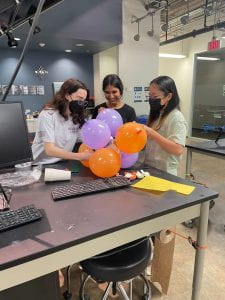Picking it up from Week 2, we started off the week with defining design criteria. After much deliberation, our team decided on two constraints (safety and functionality) and five objectives (durability, comfort, modularity, usability, and size). Such design criteria was decided based on previous weeks of research as well as many client and user interviews. There are two main features we want to deliver – enemy detection and wake up feature. It’s crucial for soldiers to be aware of the location of the enemies, and we plan to accomplish this with the help of the four thermal cameras on the current prototype. Similarly, it’s important to wake the soldiers up when necessary, so we’ve decided to incorporate a “wake up” function that alerts the soldiers when they are dozing off.
We also developed many UDS to help us measure our objectives. The most prominent ones are Comfort and Usability. For Usability, we’ve split it into two aspects: haptic differentiation and cue training. Cue training measures how long it takes an average user to interpret and memorize the different cues after some instruction and practice. On the other hand, haptic differentiation lets us know how well our cues are different from each other, and whether the user can always differentiate between two cues. As our project is very user focused, we believe that these UDS will serve to be valuable in the testing process.
Speaking of user testing, we were lucky to receive feedback on CITI training modules that will help us get through IRB approval. And we will be working to finish those as soon as possible to move the testing process along! Aside from that, we also compiled a Design Context Review full of research we did over the past weeks. It includes our research on existing solutions, historical solutions, regulations, and much more. Completing this document has helped us see how far we’ve come and serves as a justification for our decisions in the design criteria. With this information, we were also able to print some housing for the actuators, reaching preliminary success.
Outside of our project, we had a very fun lofi prototyping workshop – Egg Drop! We were grouped into teams of 4, and each team needed to create a model that would protect an egg when dropped from the second floor of the OEDK using low fidelity materials (like tape, glue, balloons, cotton balls, cardboard, etc). My team reached consensus very soon, and we focused on one thing only, which was cushioning the egg. So, we added lots of cotton balls and balloons and worked on securing the egg in the middle of it. My team’s model proved to be successful with protecting the egg, and we got the reward of a Rice coffeehouse gift card :).

lofi prototyping workshop
Towards the latter half of the week, the materials that we ordered for lofi prototyping arrived and we will work more with them this upcoming week!
